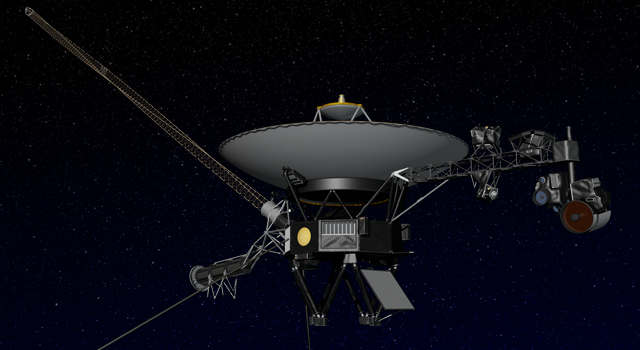[/caption]
Or, more appropriately, Voyager 1 is cooling its instruments. To help conserve power, the mission managers at NASA have decided to cut the electricity to a heating element – one that’s part of the nearby infrared spectrometer that’s not been in operation for some 14 years. This power cut will lower the temperature of the ultraviolet spectrometer by about 23 degrees Celsius (41 degrees Fahrenheit)… a temperature that’s mild compared to the below minus 79 degrees Celsius (minus 110 degrees Fahrenheit) that the instrument has dropped to in previous times. It’s not a drastic measure, however, but all part of a crucial plan to manage electrical power to keep the spacecraft operational and transmitting data for another 13 years.
Just because the power is cut back doesn’t mean the instrument quit working. At the present, the spectrometer is continuing to gather and transmit data. The resilient system was designed to work in temperatures as frosty as minus 35 degrees Celsius (minus 31 degrees Fahrenheit) and has even operated beyond the call of duty when heaters were switched off over the last 17 years. While it was taking a chance that the equipment might malfunction, the engineering team was confident since the spectrometer has worked at minus 56 degrees Celsius (minus 69 degrees Fahrenheit.) since 2005. “The spectrometer is likely operating at a temperature somewhat lower than minus 79 degrees Celsius, or minus 110 degrees Fahrenheit,” says the team. “But the temperature detector does not go any lower.”
While it has been awhile since Voyager 1’s encounter with Jupiter and Saturn which made the spectrometer busy, that doesn’t mean its data will be disregarded. Both scientists and mission management specialists will continue to monitor performance levels and an international team of scientists will further review spectrometer data.
Live long and prosper, Voyager!
Original Story Source: JPL News Release.

